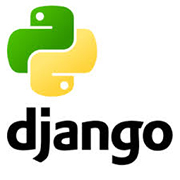Python, Frameworks
Python is a widely used general-purpose, high-level programming language. Its design philosophy emphasizes code readability, and its syntax allows programmers to express concepts in fewer lines of code than would be possible in languages such as C++ or Java. The language provides constructs intended to enable clear programs on both a small and large scale.
Python supports multiple programming paradigms, including object-oriented, imperative and functional programming or procedural styles. It features a dynamic type system and automatic memory management and has a large and comprehensive standard library.
Frameworks
Django
Django is by far the largest Python-based web framework. It is supported by a large and active community. It comes with a powerful admin interface as well as many other features out of the box. Django offers model-based forms, has its own templating language, and has excellent documentation available.
Django is great for:
• Developers who like to share ideas with each other via online forums
Useful Django apps:
Web2py
Web2py is an open source web application framework written in the Python programming language. Web2py allows web developers to program dynamic web content using Python. Web2py is designed to help reduce tedious web development tasks, such as developing web forms from scratch, although a web developer may build a form from scratch if required.
Web2py was originally designed as a teaching tool with emphasis on ease of use and deployment. Therefore, it does not have any project-level configuration files. The design of web2py was inspired by the Ruby on Rails and Django frameworks. Like these frameworks, web2py focuses on rapid development, favors convention over configuration approach and follows a model–view–controller (MVC) architectural pattern.
